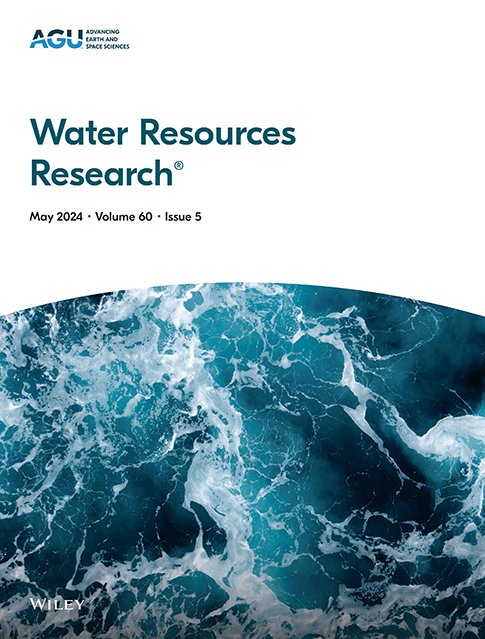Has the Three Gorges Reservoir Impacted Regional Moisture Recycling?
IF 4.6
1区 地球科学
Q2 ENVIRONMENTAL SCIENCES
引用次数: 0
Abstract
The Three Gorges Dam (TGD) and its impoundment significantly alter natural river properties and local land cover, drawing considerable concerns regarding its climatic and environmental effects. However, with the role of the Three Gorges Reservoir (TGR) in narrowing temperature ranges and changing precipitation patterns is well understood, its impact on moisture recycling is little known. Here, we tracked precipitation in the TGR basin back to evaporated moisture to explore the features of moisture recycling and quantify local evaporation ratios in the pre-dam (1980–2002) and post-dam (2003–2022) periods. The influences of the forcing data, simulation time steps and different tracking models on evaporation recycling are investigated. Relevant mechanisms are analyzed in terms of atmospheric motion, surface radiation, land cover changes and climate variability impacts. Results indicate that the precipitationshed shows a reduction in both summer and winter during the post-dam period. Local evaporation recycling ratios (ERRs) in TGR basin decrease by 0.46%, 1.07%, 0.59, 0.94% during the post-TGD period relative to the pre-TGD period in spring, summer, autumn and winter, respectively. Local evaporation contributions are limited in both the pre-dam and post-dam periods, especially in dry years. The reduced precipitation in TGR region is more dependent on upwind moisture, which results from the enhanced sinking motion and moisture divergence. Although different forcing data and simulation time steps show good agreement in spatial and temporal variations in the recycled moisture, the local ERRs are larger when calculated from the UTrack model than from the WAM-2layers model.三峡水库对区域水分循环有影响吗?
三峡大坝(TGD)及其蓄水极大地改变了河流的自然属性和当地的土地覆盖,引起了人们对其气候和环境影响的广泛关注。然而,三峡水库在缩小温度范围和改变降水模式方面的作用已广为人知,但其对水汽循环的影响却鲜为人知。在此,我们对三峡水库流域的降水和蒸发水汽进行了追踪,以探索坝前(1980-2002 年)和坝后(2003-2022 年)水汽循环的特征并量化当地的蒸发比。研究了强迫数据、模拟时间步长和不同跟踪模型对蒸发循环的影响。从大气运动、地表辐射、土地覆盖变化和气候变异影响等方面分析了相关机制。结果表明,在坝后时期,夏季和冬季的降水量都有所减少。与坝前相比,坝后流域春季、夏季、秋季和冬季的当地蒸发循环比(ERRs)分别下降了 0.46%、1.07%、0.59%和 0.94%。无论是坝前还是坝后,当地的蒸发量都很有限,尤其是在干旱年份。TGR 区域降水量的减少更多地依赖于上风水汽,这是由于下沉运动和水汽发散增强的结果。尽管不同的强迫数据和模拟时间步长在循环水汽的空间和时间变化方面显示出良好的一致性,但与 WAM-2layers 模式相比,UTrack 模式计算的局地 ERR 更大。
本文章由计算机程序翻译,如有差异,请以英文原文为准。
求助全文
约1分钟内获得全文
求助全文
来源期刊

Water Resources Research
环境科学-湖沼学
CiteScore
8.80
自引率
13.00%
发文量
599
审稿时长
3.5 months
期刊介绍:
Water Resources Research (WRR) is an interdisciplinary journal that focuses on hydrology and water resources. It publishes original research in the natural and social sciences of water. It emphasizes the role of water in the Earth system, including physical, chemical, biological, and ecological processes in water resources research and management, including social, policy, and public health implications. It encompasses observational, experimental, theoretical, analytical, numerical, and data-driven approaches that advance the science of water and its management. Submissions are evaluated for their novelty, accuracy, significance, and broader implications of the findings.
 求助内容:
求助内容: 应助结果提醒方式:
应助结果提醒方式:


